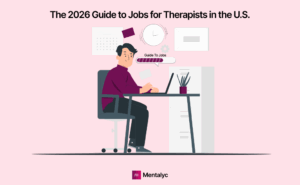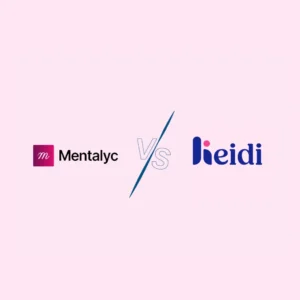Exposure hierarchy, a structured, step-by-step plan that helps clients gradually face their fears, is far more than just a standard CBT tool, it can be a lifeline for those overwhelmed by anxiety. Imagine working with someone who struggles to leave their home, paralyzed by the weight of their fears. In these moments, a well-designed exposure hierarchy transforms what feels like an impossible climb into a series of achievable steps.
Unlike the often unhelpful “just face your fears” advice, this approach brings compassion, structure, and strategy to the therapeutic process. While exposure hierarchies are commonly used in many treatment plans, their true power emerges when applied with nuance, flexibility, and an understanding that each fear holds layers of meaning beneath the surface.
Understanding Exposure Hierarchy: More Than Just a Fear Ladder
Think of exposure hierarchy as a GPS for navigating the complex terrain of anxiety disorders. While most of us learned the fundamental concept, ranking feared situations from least to most anxiety-provoking, the clinical artistry lies in understanding the underlying factors at play.
The Real Mechanism Behind Exposure
At its core, exposure hierarchy operates on principles of learning theory and extinction processes, but here’s where it gets interesting: we’re not simply helping clients get used to scary situations. Instead, we’re facilitating the formation of new, competing memory networks that deter their original fear associations. It’s like teaching your client’s brain to write a new story over the old, anxiety-driven narrative.
Neurobiology of Exposure Therapy: Amygdala, PFC & Memory Reconsolidation
The neurobiological foundation rests on our understanding of:
- Fear extinction and memory reconsolidation
- Amygdala and prefrontal cortex interaction
- New neural pathway creation
Key insight: Contemporary research reveals that successful exposure depends less on anxiety reduction during sessions and more on the violation of threat expectancies. This fundamentally changes how we approach hierarchy construction; we’re not building comfort but creating powerful learning opportunities.
The Architecture of Sophisticated Hierarchy Construction
Creating an effective exposure hierarchy requires far more than asking clients to rate their fears on a 0-10 scale.
Assessment First: Functional Analysis for Tailored Exposure Hierarchies
Effective hierarchy construction begins with a comprehensive functional analysis identifying specific fear dimensions underlying avoidance patterns.
Example: A client with social anxiety might experience distinct fear responses to:
- Performance situations
- Intimate conversations
- Authority interactions
Each requires separate hierarchical consideration.
Don’t Miss the Context
Many practitioners miss the mark here: traditional approaches often overlook critical contextual variables that dramatically impact fear intensity.
Environmental factors that can transform a manageable situation:
- Time of day
- Presence of safety signals
- Cognitive load
- Physical environment
Sophisticated hierarchies account for these variables by creating branched pathways that allow systematic manipulation of contextual elements.
Case in Point: Exposure Hierarchy for Contamination OCD
Consider a client with contamination-based OCD. A basic hierarchy might progress from touching a doorknob to handling garbage, but this misses the multidimensional nature of contamination fears.
Instead, effective hierarchies often require separate tracks for:
- Different contamination categories (bodily fluids, chemicals, moral contamination)
- Various levels of personal responsibility
- Different temporal distances from potential consequences
Behavioral Experiments: The Game Changer
Integrating behavioral experiments within exposure hierarchies represents an advanced application that transforms passive exposure into active investigation. Rather than simply enduring anxiety-provoking situations, clients engage in specific tests designed to gather evidence about their feared predictions. This approach fosters a scientist-practitioner mindset that extends therapeutic gains beyond formal treatment.
Beyond Traditional In-Vivo: Expanding Your Exposure Toolkit
Imaginal Exposures: When Reality Isn’t Accessible
Imaginal exposure invites clients into their feared scenarios through vivid mental imagery. This becomes invaluable when real-life exposure, such as confronting traumatic memories or testing catastrophic predictions about future events, isn’t possible.
The key: Creating detailed, emotionally engaging scenarios that trigger authentic anxiety responses.
Example: For someone with harm-related OCD, imaginal exposure might involve vividly imagining scenarios where they lose control and hurt someone they love. While intense, it allows systematic testing of beliefs about their dangerousness in a controlled therapeutic environment.
Interoceptive Exposures: Befriending Body Sensations
Interoceptive exposure targets the physical sensations associated with anxiety, helping clients learn these feelings are harmless messengers rather than danger signals.
Standard techniques for panic disorder:
- Spinning in a chair to replicate dizziness
- Breathing through a straw to simulate breathlessness
- Running in place to increase heart rate
The brilliance: When clients discover they can tolerate and even create these sensations deliberately, the catastrophic interpretations crumble.
Virtual Reality: The Future of Exposure Therapy
VR exposure therapy has revolutionized our ability to create controlled, repeatable exposure experiences.
Imagine the possibilities:
- Flying phobia: Experience takeoff turbulence repeatedly in your office
- Social anxiety: Practice presentations in front of virtual audiences of varying sizes
- Heights: Stand on virtual skyscrapers with adjustable intensity
The technology tricks the brain into responding as if the situation were real while providing unprecedented control over exposure variables.
Navigating Complex Clinical Presentations
Managing Comorbid Conditions
When anxiety disorders coexist with depression, trauma, or personality disorders, exposure hierarchies require careful calibration. For example, clients with depression may experience prolonged anxiety activation without typical habituation patterns.
Key considerations:
- Solution: Shorter, more frequent exposures with attention to behavioral activation principles
- Strategy: Identify which symptoms are primary vs. secondary, then prioritize accordingly
Clinical example: A client with OCD and generalized anxiety might benefit from initially addressing OCD symptoms, often resulting in secondary anxiety reduction.
Trauma-Informed Modifications
Addressing trauma within exposure hierarchies requires recognizing that anxiety symptoms may serve protective functions related to genuine safety concerns.
Essential elements:
- Distinguish between adaptive caution and pathological avoidance
- Ensure exposures don’t retraumatize
- Build distress tolerance skills before implementing traditional protocols
- Incorporate grounding techniques throughout
- Maintaining client control is a paramount consideration
Cultural Adaptations for Exposure Therapy: Respectful, Contextualized Care
Exposure hierarchies developed within Western frameworks may not translate directly across cultural contexts.
Important considerations:
- Collectivistic Cultures: Emphasize family and community considerations
- Social Anxiety Hierarchies Must account for cultural norms around interpersonal behavior
- Religious Considerations: Balance therapeutic goals with genuine faith commitments
- Strategy: Consult with religious leaders to distinguish healthy spiritual practice from pathological behavior
Real-World Applications: Complex Case Examples
Sarah’s Contamination OCD: A Multidimensional Approach
Background: a 28-year-old teacher, Sarah, developed severe contamination fears after a workplace norovirus outbreak. Traditional contamination hierarchies proved insufficient because they failed to address her core fear: causing illness in her students.
The breakthrough hierarchy incorporated three parallel tracks:
Track 1: Physical Contamination
- Touching doorknobs
- Using public restrooms
- Handling shared materials
Track 2: Moral Responsibility
- Teaching while potentially infectious
- Being around vulnerable students
- Making decisions about work attendance
Track 3: Uncertainty Tolerance
- Not knowing health status with complete certainty
- Accepting normal illness probability
- Functioning despite doubt
The pivotal moment: Sarah taught a class without her usual pre-class sanitizing ritual, addressing contamination fears, moral responsibility, and performance anxiety.
Marcus’s Social Anxiety: Beyond Public Speaking
Balancing vulnerability with psychological safety and ensuring exposures promote genuine connection rather than social rejection. For example, consider Marcus’s social anxiety centered not on performance but on interpersonal rejection sensitivity.
His hierarchy incorporated graduated authenticity exercises:
Level 1: Express mild preferences that differ from the group consensus
Level 2: Share personal opinions on non-controversial topics
Level 3: Disagree respectfully with others
Level 4: Share personal struggles in appropriate contexts
Level 5: Express unpopular opinions when values-relevant
Advanced Implementation Strategies
Overcoming Hierarchy Stagnation
When progress stalls, resist the urge to push harder. Stagnation often indicates:
- Hierarchy progression is too steep
- Important maintaining factors haven’t been addressed
- Misunderstanding of exposure rationale
- Competing contingencies maintaining avoidance
Solutions to consider:
- Revisit functional analysis
- Offer alternative exposure formats (imaginal → in-vivo, VR options)
- Create modified behavioral experiments as stepping stones
- Address safety behaviors that may be interfering
Integration of Acceptance-Based Strategies
Contemporary approaches increasingly integrate acceptance and mindfulness strategies within traditional exposure frameworks. Rather than fighting anxiety, clients learn to change their relationship with anxious feelings.
Benefits:
- Reduced dropout rates
- Enhanced long-term outcomes
- Removes pressure for anxiety reduction
- Focuses on meaningful activity engagement despite anxiety
Technology Integration and Personalization
Current innovations:
- Smartphone applications: Real-time hierarchy implementation with physiological monitoring
- Wearable devices: Immediate feedback and optimal timing identification
- AI applications: Personalized hierarchy construction based on individual response patterns
Future possibilities:
- More efficient, tailored exposure protocols
- Matching individual learning styles and anxiety presentations
- Predictive modeling for optimal exposure timing
Special Populations and Adaptations
Working with Adolescents
Required modifications:
- Increased parental involvement in hierarchy construction and implementation
- Developmental considerations for abstract thinking and future planning capacities
- Peer influence factors and school environment integration
- More frequent sessions due to developmental learning factors
Balance needed: Natural developmental push toward independence with family system dynamics.
Older Adults and Developmental Considerations
Considerations for older adults:
- Physical limitations and safety concerns
- Medication interactions
- Cohort-specific fears and experiences
- Potential cognitive changes
People with developmental disabilities require:
- Adapted complexity and pace
- Maintained core therapeutic mechanisms
- Creative hierarchy design and implementation
- Enhanced support systems
Future Directions and Clinical Implications
The field is moving toward increasingly personalized approaches based on:
- Individual learning patterns
- Genetic markers
- Neurobiological profiles
Emerging insights:
Technology-enhanced, personalized approaches that honor both neurobiological foundations and unique human experiences. Such as:
- Optimal exposure timing varies significantly between individuals
- Need for more flexible hierarchical approaches
- Focus on inhibitory learning rather than fear reduction
- Emphasis on learning opportunities and expectancy violation
Conclusion: Mastering Exposure Hierarchies for Lasting Clinical Change
Mastering exposure hierarchy construction transforms your clinical practice and your clients’ lives. This work extends beyond simple fear rankings; it requires a sophisticated understanding of learning theory, cultural sensitivity, flexibility to adapt based on individual presentations, and integration of emerging research. Each hierarchy you craft becomes a personalized roadmap from anxiety toward freedom.
Your role extends beyond technique implementation. You’re helping clients rewire their brains and take back control from anxiety. As you develop your skills with these techniques, keep experimenting to see what clicks for each person while staying true to what the research tells us works. The most powerful hierarchies balance clinical sophistication with a genuine understanding of your client’s world, creating clear pathways from fear toward meaningful, values-driven living.
Managing complex exposure hierarchies across multiple clients requires the same precision you bring to treatment planning. While VR and apps enhance the therapeutic experience, consider how technology can streamline your behind-the-scenes practice. Platforms like Mentalyc are explicitly designed for specialized work, supporting your clinical judgment without adding complexity.
Frequently Asked Questions: : Common Questions About Exposure Hierarchy & Practical Answers
How do you work with clients who refuse to engage with certain hierarchy items?
Exposure refusal typically means that the hierarchy progression is too steep or that significant barriers haven’t been addressed. Rather than pushing forward, revisit your functional analysis to identify engagement obstacles. Alternative formats (imaginal, VR, or modified experiments) can provide stepping stones to more challenging exposures.
Is anxiety reduction during sessions necessary for hierarchy success?
No. Some of the most effective exposures maintain anxiety while providing powerful corrective learning experiences. Focus on whether the exposure provides new information contradicting threat expectations rather than comfort levels.
How do you construct hierarchies for clients with multiple, seemingly unrelated fears?
Multiple fear domains often share standard underlying mechanisms despite appearing unrelated. Conduct a thorough functional analysis to identify shared themes like uncertainty intolerance, perfectionism, or responsibility beliefs. Addressing these core processes through parallel hierarchies that target the underlying mechanism while incorporating domain-specific elements is more efficient than treating each fear separately.
What modifications are needed for adolescent clients?
Adolescent hierarchies require increased parental involvement, consideration of developmental thinking capacities, attention to peer influences, and integration into the school environment. Exposures must be relevant to adolescent contexts and may need more frequent sessions due to developmental learning factors.
How do safety behaviors fit into hierarchy planning?
Address safety behaviors systematically within the hierarchy rather than eliminating them immediately. Create gradual safety behavior removal as its hierarchy dimension. For example, a client with a panic disorder might attend social events first with their safety person present, then with them nearby, and finally independently. This prevents overwhelming clients while ensuring long-term therapeutic gains aren’t undermined.
References
Abramowitz, J. S., Deacon, B. J., & Whiteside, S. P. (2019). Exposure therapy for anxiety: Principles and practice(2nd ed.). Guilford Press.
American Psychological Association. (n.d.). Exposure therapy.
Billingsley, A. L. (2022). Freeze! The impact of a guided imagery intervention on looming vulnerability and subclinical contamination-OCD symptoms.
Center for Clinical Interventions. (n.d.). Situational exposure [Information sheet].
Cleveland Clinic. (n.d.). Exposure therapy.
Columbia Psychiatry. (n.d.). What is exposure therapy?
Craske, M. G., Treanor, M., Conway, C. C., Zbozinek, T., & Vervliet, B. (2014). Maximizing exposure therapy: An inhibitory learning approach. Behaviour Research and Therapy, 58, 10–23.
Dodran, Z. S., & Eftekhari, E. (2023). The effectiveness of exposure therapy based on virtual reality on the anxiety of the speaker: Case study: Psychology undergraduate students of Tehran University.
Foa, E. B., Yadin, E., & Lichner, T. K. (2012). Exposure and response (ritual) prevention for obsessive-compulsive disorder: Therapist guide (2nd ed.). Oxford University Press.
Floaat Center. (n.d.). The benefits of exposure therapy and response prevention.
Hofmann, S. G., & Otto, M. W. (2017). Cognitive behavioral therapy for social anxiety disorder: Evidence-based and disorder-specific treatment techniques. Routledge.
Molebatsi, K., Ng, L. C., & Chiliza, B. (2021). A culturally adapted brief intervention for post-traumatic stress disorder in people with severe mental illness in Botswana: Protocol for a randomised feasibility trial. Pilot and Feasibility Studies, 7(170).
Psychology Tools. (n.d.). Delivering more effective exposure therapy in CBT.
Salerno, L., Gosch, E., Poteau, S. R., & Tyler, J. (2021). Trauma as a predictor of exposure and response prevention (Ex/RP) treatment outcomes for patients with obsessive-compulsive disorder (OCD) in a clinical setting.
Therapist Aid. (n.d.-a). Creating an exposure hierarchy [Therapy guide].
Therapist Aid. (n.d.-b). Exposure hierarchy [Worksheet].
University of Michigan Medicine. (n.d.). Exposure and desensitization.
Verywell Mind. (n.d.). Exposure therapy: Definition, techniques, and efficacy.
Wolitzky-Taylor, K. B., Horowitz, J. D., Powers, M. B., & Telch, M. J. (2008). Psychological approaches in the treatment of specific phobias: A meta-analysis. Clinical Psychology Review, 28(6), 1021–1037.
Why other mental health professionals love Mentalyc

“It immediately changed my quality of life, personally and professionally. I went from 3–4 hours a week of notes to 1 hour at most … that alone is invaluable personally and professionally.”
Owner/Independently Licensed Marriage & Family Therapist (IMFT)

“Do yourself a favor, make your life easier. Use the tools that are readily available … I found Mentalyc to be one of the best tools that I’ve ever used.”
Licensed Marriage and Family Therapist

“For those who have hesitations … It is a lifesaver. It will change your life and you have more time to be present with your patients.”
Licensed Clinical Social Worker

“If I were recommending this software to a colleague, I would tell them that it is the best thing that they could do for their practice.”
Licensed Professional Counselor






